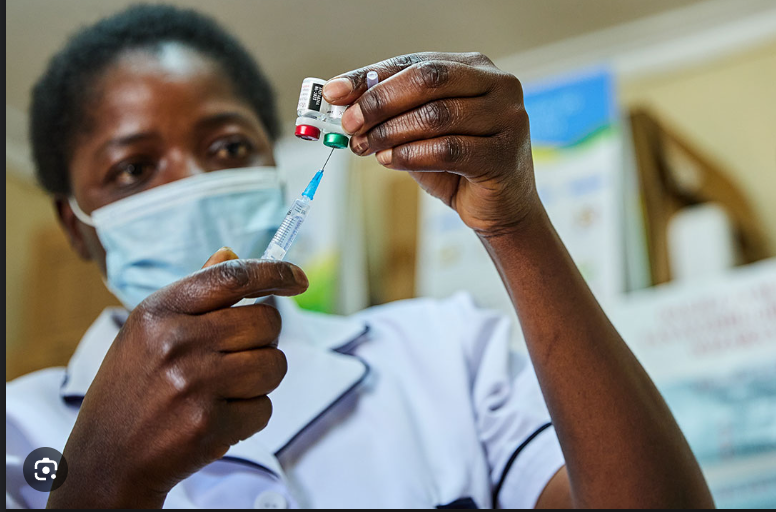To treat the viral sickness, a new malaria vaccine is now accessible. According to one scientist, the vaccination might help eradicate malaria by the year 2040.
The World Health Organization (WHO) has approved and encouraged the use of a new malaria vaccine.
Only the second malaria vaccine to ever receive approval, researchers at the University of Oxford have explored and created a new vaccine to help prevent the disease.

Adrian Hill, PhD, a professor of human genetics at the Jenner Institute at the University of Oxford, made the suggestion that the new vaccine may be able to completely eradicate malaria in an essay for The Conversation.
“I don’t believe it will happen in five or ten years, but it ought to happen in around 15 years. Therefore, 2040 would be a practical goal,” he stated.
WHO recommends a new malaria vaccine

The new vaccine, R21/Matrix-M, was created to help prevent malaria, a disease that is expected to impact 247 million people worldwide in 2021, according to the WHO Trusted Source.
According to the World Malaria Report 2022 Trusted Source, over 200 million cases of malaria have been reported globally in recent years, with over 600,000 deaths, with children under five accounting for nearly 75% of all deaths.
The second malaria vaccine on the market is this one. RTS/AS01 was the first vaccination that the WHO suggested in 2021.
According to Reuters, this new vaccine produced by the Serum Institute of India is anticipated to be less expensive to produce, which might lead to more people receiving vaccinations at a cost of $2 to $4 per dosage, as recommended by the WHO.
The Serum Institute of India reports that “the efficacy of the vaccine over 12 months was 75% at sites with high seasonal malaria transmission and 68% at sites with more perennial transmission.”
“As a researcher on malaria, I used to daydream about the possibility of developing a malaria vaccine that is both secure and efficient. Now there are two, according to a news statement from WHO Director-General Dr. Tedros Adhanom Ghebreyesus.Reliable Source.

Three doses of this new vaccination are needed, followed by a booster shot a year later.
It’s amazing to see that science is advancing us to build not only one but two partially protective vaccines against severe illnesses like malaria, for which we now have neither vaccines nor effective vaccines.
The goal of vaccine development, according to Dr. William Schaffner, an infectious disease specialist at Vanderbilt University Medical Center in Nashville, Tennessee, is to develop vaccines against serious diseases for which we currently have neither vaccines nor vaccines that are effective. One such disease is malaria.
Despite the fact that this malaria vaccine has one fewer dose than the previous vaccination, Dr. Jodie Dionne, Associate Professor of Medicine at the University of Alabama at Birmingham Division of Infectious Disease, believes that it may still be difficult to administer.
This vaccination is a little challenging because it needs to be coordinated with other children’s vaccines given in the community.
Describe malaria

also read-Eating Routines For Weight Loss: Why Your Food And Meal Times Must Coincide
Malaria is a parasitic disease that can be fatal.a reliable source that is transmitted to people through mosquitoes. Tropical settings are where it typically occurs.
While more severe symptoms are conceivable, this sickness might cause moderate symptoms, including fever, chills, and headaches.
The following are examples of malaria symptoms, per the WHO Trusted Source:
seizures, confusion, and exhaustion
breathing problems, death
Many of the earliest symptoms of malaria, such as fever, congestion, body pains, chills, nausea, vomiting, and diarrhea, are similar to those of a common respiratory illness. This presents one of the major obstacles to treating malaria.
How is malaria spread?

It is challenging to stop the spread of malaria because, unlike illnesses like COVID-19 or influenza, the disease is transferred by infected mosquitoes rather than from one person to another.
The use of insecticide-treated bed nets in places around the world with malaria has proven to be highly successful in reducing bites, according to Dionne. However, availability can occasionally be a problem.
The availability of the malaria vaccine

According to the Serum Institute of India, they already have the ability to produce 100 million doses annually and will be able to produce over 200 million doses annually over the next two years.
“This many doses being made available will help create and prevent illness for many more children in high transmission locations,” stated Schaffner.
To help prevent serious illness and death, Schaffner emphasized that public health professionals will focus on the people most impacted by malaria.
Schaffner stated that, as children are more susceptible to malaria, this population is the target audience for these vaccines.
Dr. Rajiv Bahl practices emergency medicine, is on the board of the Florida College of Emergency Physicians, and writes for publications related to health. He can be located at RajivBahlMD.com.
Also read-Five Successful Weight Loss Techniques
Images source-google




































